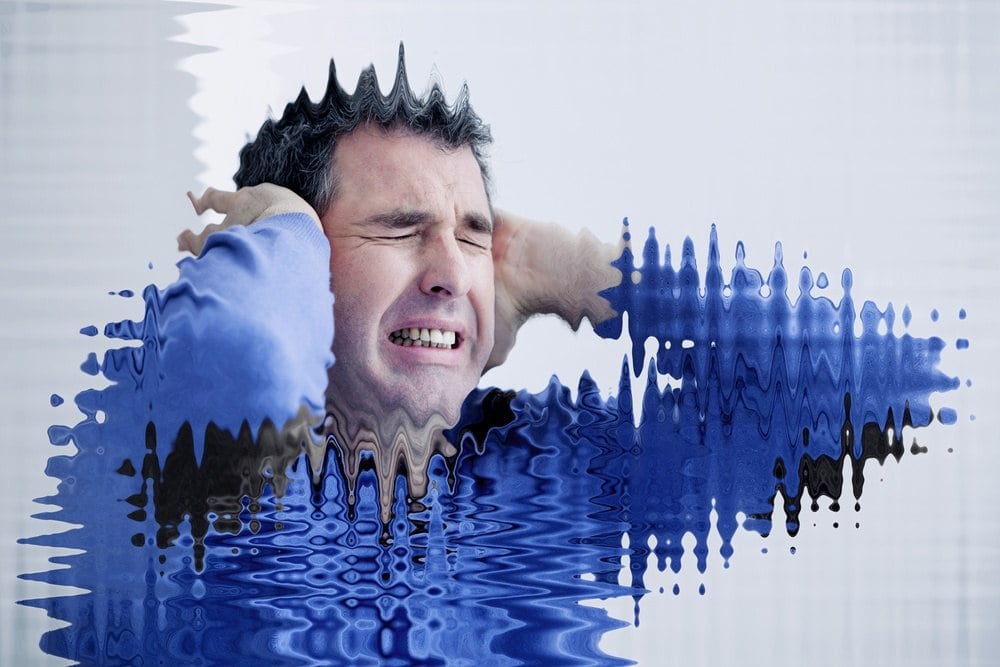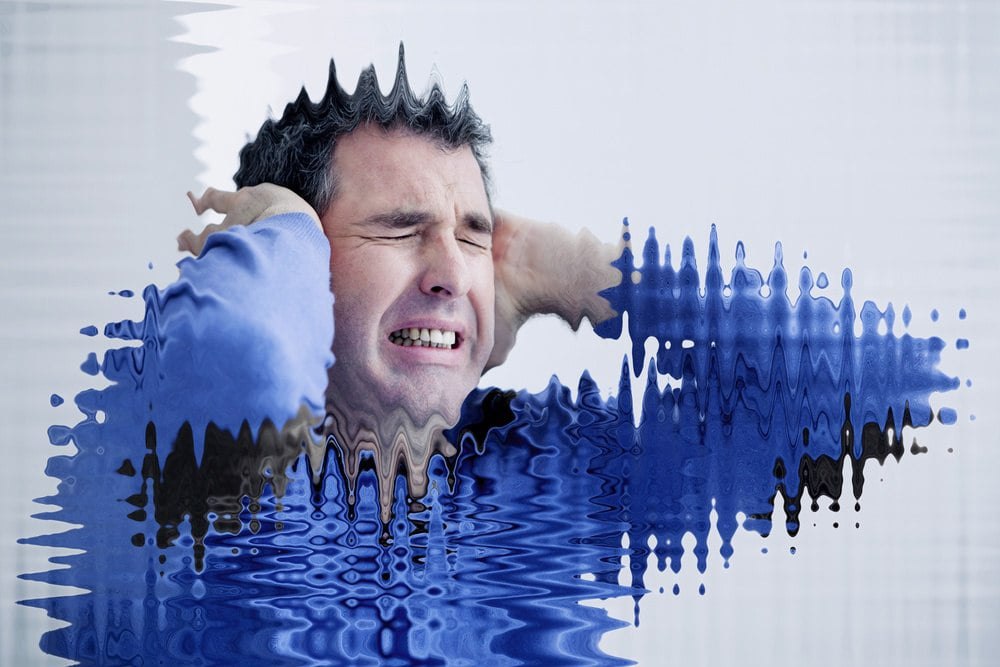What Is Hyperacusis? (Definition, Symptoms, Causes, and Treatment Options)
April 19th, 2018 | 4 min. read


If you have hyperacusis, it's important you understand the condition, its symptoms and causes as well as how it's treated.
Hyperacusis Definition
So, what is hyperacusis? It’s a condition occuring from an issue with how the central auditory processing center of your brain perceives noise. Hyperacusis usually results in discomfort and pain.
Those with the condition find tolerating sounds difficult, while others find these sounds normal. Some examples would be:
-
Riding in a car
-
Running faucet water
-
Dishwasher
-
Walking on leaves
-
Shuffling papers
-
Fan on your refrigerator
While you may perceive all sounds as too loud, particularly troublesome are high-frequency sounds.
Hyperacusis greatly compromises your quality of life. When you suffer from a severe intolerance to sound, you may find it hard, in some cases impossible, to live and function in a daily environment with all its surrounding noise. The condition can result in fear of normal sounds (phonophobia), social isolation and depression.
The American Speech-Language-Hearing Association documents that one in 50,000 individuals have the hyperacusis condition and one in 1,000 individuals with tinnitus will have hyperacusis as well.
Hyperacusis has a strong association with tinnitus — ringing in the ears. Almost 36 million people in the U.S. have tinnitus. People suffering from tinnitus can also have hyperacusis simultaneously.
Hyperacusis Subtypes
Four hyperacusis subtypes include: fear, annoyance, pain and loudness.
-
Fear hyperacusis causes an avoidance response to or behavior to sounds that result in an expectant or anticipated response.
-
Annoyance hyperacusis is where the individual displays a negative emotional reaction to noise or sounds.
-
Pain hyperacusis is where lower sound levels causes pain to individuals with the condition that typically sounds normal to those with normal hearing.
-
Loudness hyperacusis causes the individual with the condition to judge moderately intense sounds as extremely loud compared to what individuals would perceive with normal hearing.
Hyperacusis patients may even experience a few of these sub-types at the same time.
Symptoms of Hyperacusis
The telltale sign of hyperacusis is where you have increased sensitivity and a reduced tolerance to daily normal environment sounds, but there are other hyperacusis symptoms. Those suffering from the condition usually complain they live in an environment where the volume always seems too high and this affects their quality of life. In public situations where they're unable to control the noise, they may wear earmuffs or earplugs.
When you have hyperacusis, the normal, everyday sounds others would barely notice suddenly become painful and irritating. Sudden, high-pitched sounds are usually the most disturbing such as:
-
Children's screams
-
Alarms
-
The clanging of dishes and silverware
-
Bus brakes
-
Clapping
Because you're so sensitive to these noises, you may end up developing phonophobia — a fear of noise. This can cause you to avoid public and social situations in fear you'll expose your ears to harmful noise and sounds.
Causes of Hyperacusis
According to the American Academy of Otolaryngology, anyone of any age can develop hyperacusis in one or both ears. People aren't typically born with the condition, but they can develop a narrow tolerance to noises and sounds.
Common causes of hyperacusis include:
-
Ear damage from medication or toxins
-
Head injury
-
Airbag deployment
-
Lyme disease
-
Temporomandibular joint syndrome (TMJ)
-
Viral infections involving your facial nerve (Bell’s palsy) or inner ear
Having exposure to a sudden loud noise, like a gunshot, may trigger hyperacusis. However, the condition may develop gradually from listening to loud sounds without wearing hearing protection.
Numerous neurologic disorders can also associate with hyperacusis. Some include:
-
Tay-Sachs disease
-
Post-traumatic stress disorder
-
Depression
-
Some epilepsy forms
-
Migraine headaches
-
Valium dependence
-
Chronic fatigue syndrome
Some children with autism, cerebral palsy and brain injuries (because of universal sensory sensitivity) develop hyperacusis. The American Speech-Language-Hearing Association that as many as 40 percent of autistic children have hyperacusis.
Treatment Options for Hyperacusis
If you suspect you have the condition, you'll want to see an otolaryngologist or an ear, nose and throat doctor (ENT). They'll look at your ears closely, note your medical history and confirm the condition through a hearing test.
Hearing tests typically record minus decibel levels and reveal normal hearing sensitivity. But, this doesn't indicate you hear better than other people when you have hyperacusis. Rather, it’s a clear indication you have an issue with how your brain processes sound.
When there's a low tolerance to sound coupled with hearing loss, it’s known as recruitment. This is where you can't hear soft sounds, but loud sounds are distorted or intolerable. For instance, with recruitment, you may have a below 50 decibels hearing loss, but still find noise over 80 decibels intolerable.
What's causing your hyperacusis is what will determine your hyperacusis treatment options. Sometimes, your sound sensitivity may improve by itself, such as with injuries to your ear or brain.
Sound Desensitization
If this isn't the case, your doctor may suggest sound desensitization where a specialist will work closely with you to help you how to cope with sound. Each day, they'll have you listen to extremely quiet sounds for a certain amount of time and then gradually build it up to louder sounds.
Usually, you'll wear a device on both ears or one affected ear. The noise typically sounds like static, therefore, it shouldn't cause you pain or bother you. It may take you up to a year to benefit fully from this therapy.
Not enough research has been done on other hyperacusis treatments like relaxation exercises or acupuncture to confirm they're useful and can help.
Auditory Integration Therapy (AIT)
AIT is usually used in treatment for autism and involves listening to different volumes of music for a certain amount of time each day.
Medication, while not always used as a treatment option, is also available to help manage hyperacusis-related stress.
You may be tempted to wear earplugs when you have hyperacusis or steer clear of social situations where there's potential for noise that can bother you. Doing these things can provide you with short-term relief, however, they can also worsen your symptoms over the long-term since after you finally go out in public or take your earplugs off, the noise seems louder.
Through more research, researchers and doctors will learn more about hyperacusis's underlying causes which will result in better types of treatments and better medical care for their patients.
If you or a loved one is experienced increased sensitivity to frequencies and volumes of sound, contact us here at Houston ENT & Allergy at 281-649-7000 or request an appointment by completing our online form. We can examine and provide you with a hearing test. If we diagnose you with hyperacusis, we can get started on treatment right away.
Mark Lynn Nichols, M.D., received his Bachelor of Science degree with Honors in Pharmacy in 1983, prior to his entering the University of Texas Medical Branch, Galveston, Texas, where he received the degree of Doctor of Medicine with Highest Honors. Following his Internship in General Surgery, and Residency in Otolaryngology at UTMB, Dr. Nichols did a Fellowship in Otology-Neurotology at the Ear Research Foundation, in Sarasota, Florida. He is a member of several professional associations, and is a Diplomat of the American Board of Otolaryngology.
Topics:
